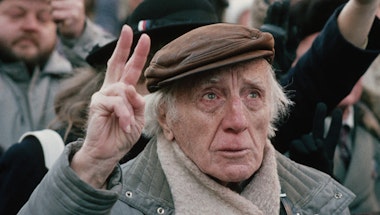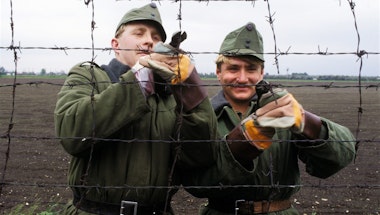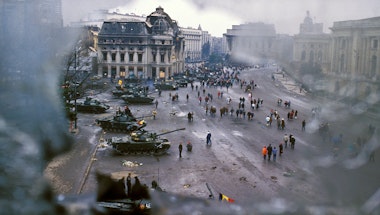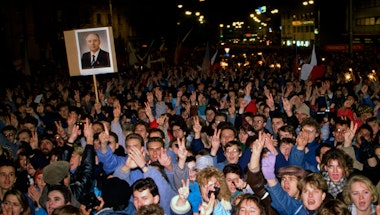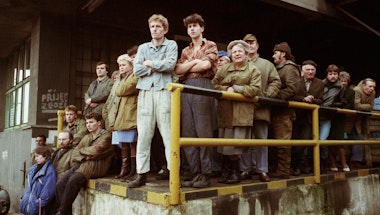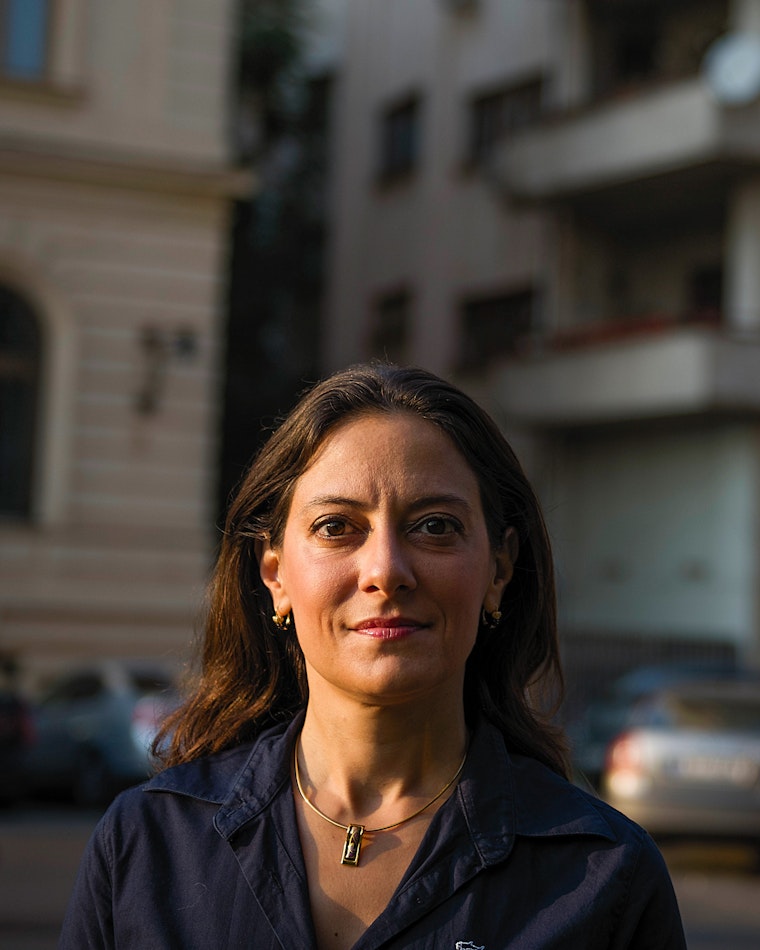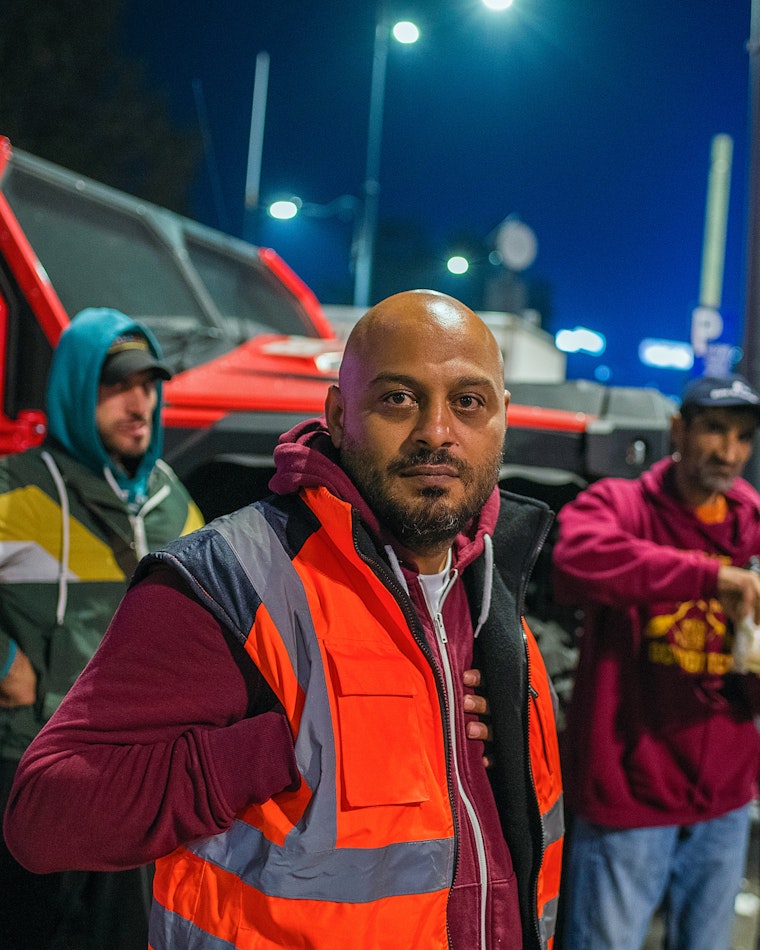
Romania
The overthrow of the dictatorial regime of Nicolae Ceaușescu in Romania was marked by extreme violence. It began in early December in the western city of Timișoara. Protests, initially led by members of the region’s ethnic Hungarians, soon gained the support of students and others. On December 17, police in Timișoara opened fire on demonstrators. With state media remaining silent about the trouble, on December 21, Ceaușescu sought to rally support for his regime with a mass gathering in the capital, Bucharest—only to be booed and heckled. Protests then erupted in the heart of the city. The following day, members of the police and army joined the protests, fighting gun battles in the center of Bucharest with members of the Securitate, Ceaușescu’s secret police. Ceaușescu and his wife were forced to flee by helicopter, but they stopped and were arrested. After a brief show trial on Christmas Day, both were executed by a firing squad.
Oana Popescu-Zamfir
“I think all of us have been living with the subliminal idea that something that looks perfectly stable today can fall to pieces tomorrow in a completely unexpected and unpredictable way.”
— Oana Popescu-Zamfir, Director, GlobalFocus CenterIn 1989, Oana Popescu-Zamfir was 11 years old.

Ciprian Necula
Everyone in Romania remembers exactly where they were at different moments of the December 1989 revolution. But when it comes to remembering what they thought it all meant at the time, they become a little hazy. Ciprian Necula was 10 years old, and, for him, it was all sex and bananas. As Nicolae Ceaușescu fell, the adults told the kids in his apartment block that it meant that they would now all get bananas—an exotic rarity in the Eastern Bloc. Then, just after the execution of Ceaușescu and his wife on Christmas Day, the children locked themselves in the sitting room to watch Emmanuelle, the 1974 erotic film, which was being broadcast on the previously staid and prudish state-owned television.
“It was amazing,” laughs Necula. Looking back, he says, it is clear that no one knew what freedom meant. No one had seen the revolution coming, either. When the Berlin Wall came down, on November 9, 1989, it was just another day for Romanians. In Romania, under Ceaușescu, there were no roundtable discussions between the party and the people about the way forward, as there had been in all the other Eastern European Communist states. Instead, the revolution arrived suddenly, with a literal bang. No one was prepared for it, or for what came next.
Today, Necula runs Aresel, a platform for encouraging members of Romania’s Roma minority to understand and use their power. According to the 2011 census, Roma then made up 3.3 percent of the country's population. But since many Roma don’t declare themselves as such, Necula thinks that his people could amount to as much as 10 percent of the population. However, of 329 deputies in parliament, only two are Roma.

For many Roma, the revolution quickly turned sour. In the 1990s especially, they became the targets of frequent, ethnically motivated attacks. Under Communism, overt racism had been suppressed. No longer. One of Necula’s first jobs was to collect job adverts, including from the Ministry of Labour, which actually specified “No Roma.” He and his team were sent to foreign embassies in a bid to elicit international support. As all Romanians began to grapple with what freedom meant, Roma discovered that many of their fellow citizens understood it to mean that now they were free to “express their racism.”
Ceaușescu’s Romania was a harsh dictatorship. But under Ceaușescu, Roma, like everyone else, had jobs and basic security. As the old economy disintegrated, however, Roma were the first to lose their jobs. Marginalization and segregation increased, but, at the same time, the first Roma civil society organizations began to emerge. One of their hardest fought battles was to be called Roma officially—as opposed to the pejorative “Tigan” or “Gypsy.” It was tough because many Romanians believed that the closeness of the two names meant that they would be confused, as Necula says, with these “inferior people.”
Some of these battles were won, as Romania sought to reassure the European Union and the international community of its democratic credentials. Three decades since the revolution, though, the picture is mixed. That’s true for all Romanians but, for Roma, it is even more so. Many Roma are far better off than they were before and a small Roma middle class has begun to emerge. But far more remain desperately poor, sometimes lacking the official papers they need to secure basic services, including healthcare. On the other hand, Romania joining the European Union in 2007 opened the door for Roma to go abroad legally and work, and this has meant money flowing home.
Roma civil society organizations have been active, but their work has sometimes proved to be a double-edged sword. The problem, says Necula, a former state secretary at the Ministry of European Funds, is that when Roma groups organize tutoring for schoolchildren after-hours, or when they install water pipes to Roma districts where there were none before, the local government officials—who should have been doing this work in the first place—are under less pressure to deliver.
But some things are changing for the better. This year, a video emerged of a minibus driver beating a Roma mother carrying a baby after he refused to take them on his bus. When she called the national emergency number to report the assault, the operator then began swearing at her because she was Roma. Most of the media then reported the story as the racist scandal that it was, says Necula, in a way they would never have done before. When, in January, the president decorated 10 Jewish Holocaust survivors, Necula and others wrote to him to demand recognition for Roma survivors, too. An apology, plus decorations for a group of Roma, swiftly followed.
“What I realized is that we are not demanding our rights,” says Necula. “That is why people are ignoring us. That is why people are just not mentioning us or they talk about us in a negative fashion—because we are not active enough!”
Unlike Romania’s Hungarians, the country’s other big minority, who have always played an important political role, Roma have played none. People loosely identify as Roma but historically they have been poor and divided, never managing to translate their numbers into political power. If Necula has his way, that is going to change.
Marian Ursan
“One of the things [we must do] is to invest in a new political generation, and educate them to pay attention to vulnerable people.”
— Marian Ursan, Director, Carusel In 1989, Marian Ursan was 10 years old.
